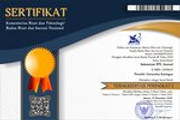THE ENGLISH-LEARNING STRATEGIES OF AN INDIGENOUS ENGLISH LEARNER IN THE NORTHEAST OF THAILAND
Abstract
This study investigated English-learning strategies applied by an indigenous student in Amnat Charoen Province, in the Northeast of Thailand. Despite the lack of English exposure in the area, the participant, who was an English learner at a private primary school in Amnat Charoen Province, Thailand, had an excellent English ability. The data collection and analysis were done qualitatively through interviews and observations. Based on the interviews and observations, the participant was reported using both direct and indirect strategies in learning English. The dominant direct learning strategies were memory strategies and compensation strategies. The participant developed habits to summarize learning materials and use gestures to assist the speaking practice. Also, in the frame of indirect strategies, the participant applied social strategies more frequently than other indirect learning strategies. The social strategies were obviously noticeable in the consistency to practice English by interacting with foreign teachers. Further, the social learning strategies were also believed to be the most essential learning strategies developed by the participant.
Keywords: learning strategies; direct strategies; indirect strategiesFull Text:
PDFReferences
Ardasheva, Y., & Tretter, T. R. (2013). Strategy inventory for language learning-ELL student form: Testing for factorial validity. The Modern Language Journal, 97(2), 474-489. doi: 10.1111/j.1540-4781.2013.12011.x.
Bai, B., & Guo, W. (2019). Motivation and self-regulated strategy use: Relationships to primary school students’ English writing in Hong Kong. Language Teaching Research,1–22. doi: 10.1177/1362168819859921.
Creswell, J.W. (2012). Educational research planning, conducting, and evaluating quantitative and qualitative research (4th edn.). Boston: Pearson.
Dmitrenko, V. (2017). Language learning strategies of multilingual adults learning additional languages. International Journal of Multilingualism, 14(1), 6–22. doi:10.1080/14790718.2017.1258978.
Fraenkel, J. R., Wallen, N. E., & Hyun, H. H. (2012). How to design and evaluate research in education (8th edn.). New York: MacGraw-Hill.
Grubbs, S.J., Chaengploy, S., & Worawong, K. (2009). Rajabhat and traditional universities: Institutional differences in Thai students' perceptions of English. Higher Education, 57(3), 283-298. doi:10.1007/s10734-008-9144-2.
Intachakra, S. (2004). Contrastive pragmatics and language teaching: Apologies and thanks in English and Thai*. Regional Language Centre Journal, 35(1), 37-62. doi: 10.1177/003368820403500105.
Klainin, S. (2009). Using the results from international and national assessments. Presentation at improving equity and quality of education in Thailand: An international perspective, Chiang Mai, Thailand. Retrieved from http://go.worldbank.org/K13IKDDG30.
Mazumder, Q. (2014). Student motivation and learning strategies of students from USA, China and Bangladesh. International Journal of Evaluation and Research in Education, 3(4), 205-210. doi: http://dx.doi.org/10.11591/ijere.v3i4.6288.
Minegishi, M. (2011). Description of Thai as an isolating language. Social Science Information, 50(1), 62–80. doi: 10.1177/0539018410389107.
Oxford, R.L. (1990). Language learning strategies: What every teacher should know. Boston: Heinle & Heinle.
Oxford, R.L. (1996). Language learning strategies around the world: Cross-cultural perspective. Manoa: University of Hawaii Press.
Oxford, R.L. (2017). Teaching and researching language learning strategies: Self-regulated regulation in context (2nd Ed.). New York: Routledge.
Pawlak, M. (2019). Investigating language learning strategies: Prospects, pitfalls and challenges. Language Teaching Research, 1–19. doi: 10.1177/1362168819876156.
Qingquan, N., Chatupote, M., & Teo, A. (2008). A deep look into learning strategy use by successful and unsuccessful students in the Chinese EFL learning context. RELC Journal, 39 (3), 338-358. doi: 10.1177/0033688208096845.
Rao, Z. (2012). Language learning strategies and English proficiency: Interpretations from information-processing theory. The Language Learning Journal, 1–17. doi: 10.1080/09571736.2012.733886.
Seel, N.M. (Ed.). (2012). Encyclopedia of the sciences of learning. New York: Springer US. doi: 10.1007/ 978-1-4419-1428-6.
Seker, M. (2015). The use of self-regulation strategies by foreign language learners and its role in language achievement. Language Teaching Research, 20(5), 600–618. doi:10.1177/136216881 5578550.
Solak, E., & Cakir, R. (2015). Language learning strategies of language e-learners in Turkey. E-Learning and Digital Media, 12(1), 107–120. doi: 10.1177/2042753014558384.
Yaacob, A., Shapii, A., Alobaisy, A.S., Al-Rahmi, W.M., Al-Dheleai, Y.M., Yahaya, N., & Alamri, M.M. (2019). Vocabulary learning strategies through secondary students at Saudi School in Malaysia, SAGE Open, 1–12. doi: 10.1177/2158244019835935.
DOI: https://doi.org/10.25134/ieflj.v6i1.2633
Refbacks
- There are currently no refbacks.

This work is licensed under a Creative Commons Attribution-ShareAlike 4.0 International License.

